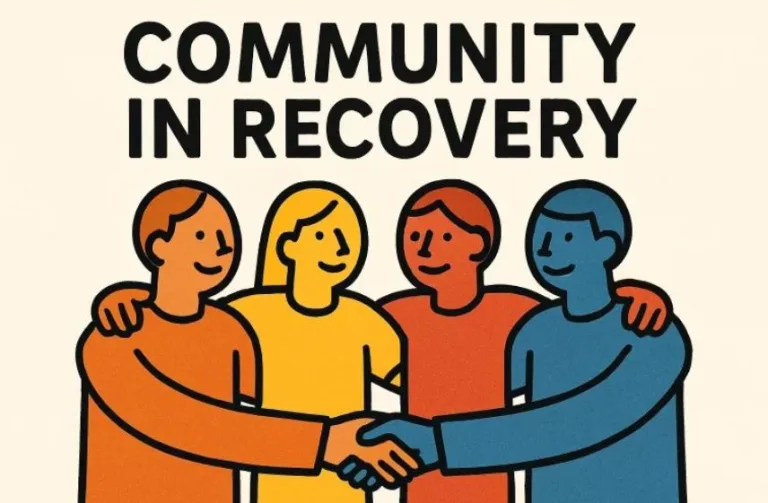Top 10 New Business Models for Work from Home Housewives or Anybody Who Has Free Time
In the rapidly shifting landscape of 2025, the traditional boundaries of work have almost completely dissolved. Working from home is no longer just a backup option; it’s a full-scale lifestyle embraced by millions. What once required an office, a manager, and rigid hours can now be done with a laptop, a phone, and a strong Wi-Fi connection.
For housewives, students, retirees, and anyone looking to turn free hours into income, the digital economy offers more opportunities than ever before. The best part? Many of these models can be started without huge investments—just creativity, discipline, and a little curiosity about how the online world truly works.
Let’s explore the top 10 new business models that are reshaping how people earn from home, ranked not only by profitability but also by flexibility and long-term sustainability.
1. Content Micro-Entrepreneurship
A decade ago, being a “creator” was mostly limited to YouTubers and bloggers. Today, micro-content creators dominate platforms such as TikTok, Instagram Reels, and YouTube Shorts. The difference now is scale: you don’t need millions of followers to make a living.
Micro-entrepreneurs create niche content around cooking, cleaning tips, home organization, daily life hacks, or even quiet lifestyle aesthetics. With consistency and a clear identity, they attract micro-sponsorships, product collaborations, and affiliate sales.
The algorithmic shift toward short-form video has created a new layer of income potential. Platforms reward watch time and engagement, and brands actively search for smaller creators who deliver authentic influence. A stay-at-home mom making creative lunchbox videos can earn steady income through sponsorships and brand collaborations, while a retired teacher can share educational clips and sell digital courses.
The investment is minimal: a smartphone, a ring light, and a clear understanding of your audience’s needs.
2. AI-Assisted Freelancing
Artificial intelligence hasn’t killed freelancing—it has transformed it. The new wave of online professionals use AI as their co-worker. Graphic designers rely on AI art generators for faster concept development. Copywriters use language models to build marketing campaigns in half the time. Even administrative assistants automate repetitive tasks through AI tools.
AI-assisted freelancing thrives on platforms such as Upwork, Fiverr, and specialized marketplaces for prompt engineering, chatbot training, and digital workflow design. The barrier to entry is lower than ever.
For housewives or people working part-time, this model offers the flexibility to take small projects—designing logos, proofreading, or automating Excel sheets—with AI acting as a creative amplifier rather than a competitor. Learning how to properly guide AI (called prompt design) has become one of the most valuable soft skills of the decade.
With the right strategy, freelancers can deliver faster, charge more, and handle more clients simultaneously—all without sacrificing quality or sanity.
3. Independent Video Chat & Cam Modeling Jobs
Among all digital work models, cam modeling jobs have quietly evolved into a legitimate form of self-employment that emphasizes communication, creativity, and personal branding. Far removed from the stereotypes of the early internet era, this profession has become part of the modern creator economy.
Women and men alike work on secure, verified platforms that pay for private video chats, live streams, or fan interactions. The income can be significant—often higher than traditional remote jobs—because payment is based on time and audience engagement rather than a fixed salary.
Most importantly, this model gives complete flexibility. You decide when to work, how long, and what level of privacy you want to maintain. Many people now use only their phones and create a controlled environment where they feel comfortable expressing themselves.
With proper management and guidance, newcomers can start professionally, learn the business side (marketing, communication, financial planning), and build loyal audiences that generate stable monthly income. The best starting point for this career is through specialized agencies and verified apps such as Camstar, which provide full onboarding and ongoing support for beginners.
For housewives, single parents, or anyone seeking high-income flexibility without a strict schedule, this can be an empowering and fully remote opportunity that merges entertainment with entrepreneurship.
4. Voice-Over and Audio-Based Content Creation
Audio is the hidden giant of the digital economy. Podcasts, audiobooks, AI voiceovers, and even sound effects libraries have become massive industries. People with pleasant voices—or simply clear diction—can now record content directly from their homes using basic microphones and free editing software.
Podcasters can monetize through sponsorships or listener support programs, while audiobook narrators get paid per finished hour of recording. Meanwhile, voiceover artists are in constant demand for YouTube channels, advertising, and animated explainers.
The rising trend of faceless content means that voice has regained its value. Housewives who feel uncomfortable showing their face online can find steady work narrating self-help books, educational material, or even bedtime stories for apps. As synthetic voices flood the market, natural tone and human warmth are once again rare and marketable commodities.
5. Remote eCommerce Partnerships (Dropshipping 2.0)
Classic dropshipping—selling cheap products from overseas warehouses—has become oversaturated. The 2025 version, however, is far more sophisticated. Entrepreneurs now use local suppliers, micro-warehouses, and AI-driven ad testing to build lean eCommerce brands that can operate entirely from home.
Housewives or part-timers can collaborate with existing online stores as micro-partners: managing social media pages, running ads, or handling customer communication for a share of revenue. Others build themed stores around lifestyle categories—eco cleaning, pet care, minimal home decor—using platforms like Shopify or WooCommerce.
The key is no longer just “sell anything.” It’s about creating a micro-brand that feels real and trustworthy. With the help of automation tools that handle orders, tracking, and emails, even a single person can run a store that operates 24/7 while they’re busy living their offline life.
6. Remote Digital Consulting and Micro-Coaching
In the age of the internet, knowledge itself has become a product. People are willing to pay not just for information—but for clarity, structure, and accountability. Digital consulting is one of the fastest-growing remote industries because it doesn’t require physical presence or large infrastructure.
A housewife who once worked in marketing can now coach small local businesses online about how to use Instagram. A retired accountant can teach financial literacy through weekly Zoom sessions. Even those without formal credentials can become micro-coaches by focusing on lived experience—such as parenting, self-care, or home management.
Micro-coaching platforms allow users to host sessions, offer email or chat-based mentorship, and receive payments directly. This model suits individuals who are articulate, empathetic, and organized. Starting small, with two or three clients a week, can quickly lead to a full-time remote income if structured correctly.
Over time, many consultants convert their expertise into passive income by turning lessons into downloadable courses or group workshops. The beauty of this model is that it thrives on authenticity rather than perfection—people connect with someone relatable who’s just a few steps ahead of them.
7. Virtual Event Management
As physical events evolved into hybrid or fully virtual formats, a completely new work-from-home niche appeared: virtual event planning. Corporations, online schools, and even small communities host everything from webinars to full virtual expos—and they need organizers who can handle everything behind the scenes.
A virtual event manager coordinates guests, handles tech rehearsals, monitors chatrooms, and manages promotional materials. With the right system, one person can coordinate multiple events per month while earning service fees or commissions.
For housewives and anyone with organizational skills, this role is perfect. It’s time-flexible, detail-oriented, and collaborative. Once a person gains experience with a few platforms (Zoom Events, Airmeet, or Hopin), the process becomes repeatable and scalable. Many professionals later expand into running entire event agencies from home, hiring assistants to manage parallel sessions or design digital banners.
The industry is still young, which means early adopters build reputations fast. Every event becomes a portfolio piece—proof of reliability that attracts bigger clients next time.
8. Subscription-Based Creative Services
A subtle but powerful transformation has occurred in freelancing: the rise of monthly subscription models. Instead of charging per project, freelancers now offer ongoing creative services—like “unlimited graphic design,” “video editing subscription,” or “content writing membership.”
From home, a skilled freelancer can manage five or six small clients paying fixed monthly fees. This model stabilizes income and removes the constant hunt for new clients. Housewives who have basic design or marketing skills can apply this principle to nearly any creative niche.
What makes it powerful is the predictability: fixed recurring income, repeatable tasks, and growing long-term relationships. Once the system runs smoothly, outsourcing parts of the workload (for example, hiring a virtual assistant or a junior designer) creates an entire micro-agency—still operated from home.
The subscription model combines freedom with structure. It rewards consistency over hustle, making it ideal for people balancing home life, family, and work hours.
9. Community-Based Online Reselling
The old concept of selling second-hand goods has evolved into organized community reselling networks. Apps like Vinted, Poshmark, and Facebook Marketplace are just the starting point. The new model revolves around curated niche stores—such as “luxury pre-owned handbags,” “vintage children’s toys,” or “eco home items.”
People now build entire side businesses buying and reselling through small community circles. Housewives often lead this movement because they have sharp awareness of product quality, presentation, and customer trust.
Automation tools help manage listings and messages, while photo-editing apps make even used products look brand-new. Some resellers expand further by partnering with local consignment stores, handling the online side while the partner stores manage physical storage.
It’s sustainable, profitable, and friendly to people who love organizing, sorting, and negotiating—all skills often undervalued in traditional workplaces. With creativity, it becomes a full-time business.
Many successful sellers reinvest profits into private-label goods, launching small lifestyle brands entirely from home.
10. The Knowledge Library Model: Building Paid Archives and Resource Hubs
This is one of the most overlooked but potentially lucrative models for 2025: the knowledge library. Imagine building a single, high-quality online hub—a “mini Wikipedia” for a specific topic—and monetizing it through memberships, ads, and micro-products.
Writers, teachers, and enthusiasts can create digital libraries on almost any topic: home fitness, nutrition for mothers, spiritual wellness, home schooling, or financial independence. Visitors pay small monthly fees for access to guides, templates, and downloads.
With tools like Notion, Ghost, and WordPress membership plugins, this system can be built by one person without coding. Once content is published and indexed by search engines, the model grows organically over time through SEO and community recommendations.
It’s perfect for people who enjoy writing, organizing knowledge, and building something permanent. Every article, chart, and tutorial becomes part of a personal intellectual asset—something that can generate income for years even without daily maintenance.
The best part is ownership: unlike social media, where content disappears fast, a knowledge library is your own digital property. It becomes your online legacy.
The Core Mindset Behind All These Models
The most successful work-from-home professionals share one pattern: they don’t wait for permission. They experiment, fail, learn, and pivot quickly. The modern economy rewards movement, not titles.
The barrier to starting any of these businesses is not money—it’s hesitation. Most tools are free, tutorials are public, and communities are open. Whether you are a housewife, a part-time student, or someone in mid-career transition, your next opportunity is already inside your browser history.
The next challenge is scaling intelligently, without burnout or chaos. In the third and final part, we’ll explore the practical systems that transform small work-from-home projects into sustainable, long-term businesses that can grow year after year.
Building Systems That Turn Side Projects into Real Businesses
Starting a home-based project is easy; keeping it consistent is the real test. The difference between a hobby and a business is structure.
Every person who succeeds in the new remote economy builds three invisible systems:
time discipline, digital organization, and automation.
Let’s take them apart.
Time discipline is the cornerstone.
Working from home blurs the line between personal and professional life. The kitchen table becomes an office, and every notification feels like a task. The key is to define boundaries early. Successful remote workers set strict blocks—creative hours, outreach hours, and rest hours. Even if it’s just two focused hours per day, consistency compounds faster than random bursts of enthusiasm.
Digital organization comes next.
Every file, invoice, contract, and client conversation should live in an accessible system—Google Drive, Notion, or a well-structured folder hierarchy. Automation starts with clarity, not technology.
Automation, finally, is where freedom appears.
Scheduling posts, auto-sending invoices, pre-recording content, and using AI to handle repetitive writing or image tasks saves dozens of hours monthly. What used to take a team of five can now be done by one well-organized person with the right stack of tools.
How to Scale Without Losing Balance
Many people rush to expand, adding clients and complexity too soon. The smarter way is to treat scaling like gardening: grow one branch at a time.
- Standardize before you multiply.
Once your process works once, document it. Write down every step so it can be repeated or delegated. - Automate the dull, humanize the vital.
Use automation for email replies or invoices, but keep personal attention for creative or emotional parts of your business. - Leverage collaboration.
Working from home doesn’t mean working alone. Connect with virtual assistants, editors, or community managers. Collaboration keeps energy high and prevents burnout. - Invest in brand, not just marketing.
A small logo, a recognizable color palette, and a clear story make you memorable. People buy from individuals who feel real.
Scaling isn’t about bigger numbers—it’s about smoother systems that keep making money while you take a day off.
From Free Time to Financial Independence
Most people underestimate what one hour per day can do when applied with focus. The compounding effect of small progress is astonishing. A housewife who records one short cooking video daily could have 300 videos by the end of a year. A micro-coach offering two sessions a week will have helped over a hundred people by December.
Work-from-home success in 2025 is built on creative persistence, not capital. Each model described—from content creation to consulting—shares a single DNA: ownership. You’re building something that belongs to you, not to a corporation or an app algorithm.
Freedom doesn’t mean doing nothing; it means doing what matters, from wherever you are.
Common Mistakes to Avoid
Even good ideas fail when handled with poor discipline. A few traps appear repeatedly among beginners:
- Trying too many things at once. Pick one model and master it before exploring others.
- Ignoring basic financial tracking. Keep a spreadsheet of every expense and earning.
- Underpricing your time. Working from home doesn’t mean you’re cheap. Charge by value, not hours.
- Over-relying on trends. Tools change fast. Build principles, not dependencies.
- Neglecting well-being. A calm routine produces better ideas than caffeine-fueled chaos.
Learning to pause is part of the business plan. Creativity thrives in rest.
The Future of Work at Home
We’re entering an era where the word “employee” feels almost old-fashioned. Remote tools, blockchain payments, and global connectivity make individuals as powerful as small companies. Housewives, students, and part-timers can now join the same economic arena as entrepreneurs and brands.
AI, automation, and decentralized finance will continue to merge, giving rise to hybrid professionals: teacher-influencers, artist-analysts, consultant-creators. The next decade won’t belong to corporations—it will belong to independent minds who know how to merge passion with technology.
Work from home is no longer a compromise; it’s a design for freedom. It gives parents more time with children, travelers more control over schedules, and professionals more ownership over their identity.
Those who embrace this early will define what “career” means for the next generation.
Conclusion
The digital revolution didn’t destroy opportunity—it multiplied it. What matters now is adaptability. Whether it’s AI-assisted freelancing, community reselling, or cam modeling jobs, the winners are those who learn fast and act decisively.
For housewives, freelancers, or anyone with free time, these ten business models are not just income ideas—they’re entry points into self-reliance. Each model rewards creativity, persistence, and a willingness to learn.
Start where you are. Use what you have.
The internet has already opened the door; the next step is simply walking through it.







